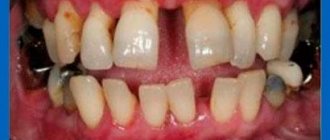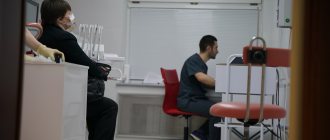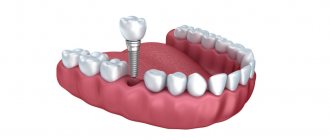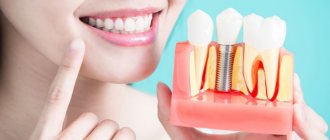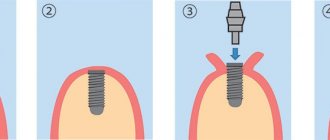- Questions and answers
- Stock
- Reviews
Bone grafting (osteoplasty) is an expensive operation, the effect of which is not always predictable and extends over time. That is why NovaDent dentistry, where possible, tries to use alternative treatment methods. This article gives a general idea of when it is possible to do without bone grafting during implantation, and when this procedure is mandatory.
The concept of sinus lift and the scope of the procedure
Sinus lifting (or, scientifically, subantral augmentation) is an implantological operation, the purpose of which is to increase the thickness of the bone under the lower wall of the maxillary sinus.
Bone augmentation during dental implantation
The structure of the alveolar ridge is significantly different from the structure of the lower jaw, the maxillary bone is more porous, and above the upper lateral teeth is the maxillary sinus, the largest paranasal sinus, which lightens the mass of the skull, helps warm the inhaled air, and resonates the human voice. In some patients, the jaw bone is so thin that the tops of the tooth roots are located directly in the cavity of the maxillary sinus; this is not a deviation, but rather an anatomical feature of the jaw structure. In such clinical cases, when a tooth is lost or removed through the resulting hole, damage to the mucous membrane and infection of the maxillary sinus may occur. To prevent this, a sinus lift of the teeth is performed.
Incorrect and correct implantation after sinus lift
In other patients, the roots of the tooth do not protrude beyond the alveolar ridge, but still, dental implantation in the upper jaw will be effective and safe when the thickness of the bone tissue under the maxillary sinus is at least 10 mm, then the implant will not disrupt the integrity of the mucous membrane inside the paranasal sinus. Moreover, after the removal or loss of a tooth, a natural and irreversible process occurs over time - bone tissue atrophy. The bone is no longer exposed to stress in the toothless area, resulting in its necrosis, which can lead to a change in the position of individual teeth, displacement of the dentition, changes in facial contours and distortion of facial expressions. In these cases, bone grafting during dental implantation is simply necessary.
When can you do without bone grafting?
You can always do without bone grafting when you can install an implant of the required diameter and required length into the remaining bone.
And, in fact, you shouldn’t do bone grafting just to assert yourself. Some doctors suffer from this, trying to prove to themselves or someone else how they can do bone grafting.
But, as they say, the best bone grafting is the one we don’t do: if the patient can be rehabilitated without bone grafting, then it’s better to do just that. Since volume can be added with soft tissues, connective tissue can be transplanted - a graft, or drugs can be added to replace the volume of soft tissues - and achieve an excellent result!
Contraindications for surgery
Bone grafting during implantation is a fairly common procedure in dentistry; there is very little that is impossible for progressive medicine, but sinus lifting still has a number of contraindications. Some restrictions can be eliminated, while other contraindications are categorical. The sinus lift procedure is prohibited in the following cases:
- The patient has HIV infection, aggravated to the stage of affected immunodeficiency (AIDS). Before undergoing bone grafting, the patient will need to normalize their viral load and CD4 counts by taking antiretroviral therapy.
- The patient is diagnosed with acute rhinitis, sinusitis or the presence of polyps. These diseases can be easily treated with therapeutic methods or simple surgery, because modern ENT surgery also works wonders. It is also not recommended to carry out the procedure during the rehabilitation period after other operations of the nasal cavity and sinuses - reposition, correction of the nasal septum, removal of a cyst, etc.
- Cancer tumors in the patient’s body and the rehabilitation period after radiation and chemotherapy.
- Poor blood clotting (hemophilia) was a disease of many European monarchs of yesteryear.
- Diseases of the cardiovascular system, as well as chronic drug addiction and alcoholism.
- Anatomical features, for example, the location of the maxillary sinuses too close to each other, or current exacerbations of the patient’s chronic diseases.
All-on-four technology
The technique for restoring a smile in patients with completely missing teeth can also be performed without bone grafting. The technology consists of installing four implants in those places where there is always enough bone tissue. Then, after the implantation period, conditionally permanent dentures are attached to them, which need to be detached and cleaned every six months.
This technique is quite convenient and less traumatic, but is still inferior to splitting the alveolar ridge using specific implants. Fastening completely stable and permanent crowns is always preferable to using structures that require special care. In addition, such dentures must be installed by an experienced dentist, since any error in calculations and fastenings will lead to disruption of the physiology of stress on the gums during chewing. This type of error is the main reason for subsequent implant failure.
Methods of bone grafting and stages of the procedure
Sinus lifting is a rather complex and painstaking operation that requires a highly qualified doctor, however, to carry out the procedure itself for increasing the bone of the alveolar process, a high-class professional will need only 30-50 minutes. Much more time is spent on preparation for surgery and thorough diagnosis, as well as on the rehabilitation period after it.
Stages of bone tissue augmentation followed by implantation
Depending on the method of operation, the algorithm of the entire procedure is as follows:
- The diagnostic stage, during which the jaw bone is examined, its density and height are determined, as well as the nasal cavity and maxillary sinuses are examined for chronic diseases. The necessary X-rays are taken, tests are taken, and if necessary, the doctor can refer the patient for examination to other specialists in order to identify all possible contraindications and finally decide on the sinus lift method.
The operation requires jeweler's precision from the specialist, so the maxillofacial surgeon can first perform a virtual procedure using computer programs and 3D modeling, this will reduce the risk of complications, reduce the procedure time and make the approach to the patient more individual.
- The surgical stage may include two main methods of bone augmentation:
- An open sinus lift is performed when there is a large lack of bone tissue with a bone thickness of less than 7-8 mm. Under local anesthesia, an incision is made in the gum and a hole is drilled in the bone, allowing access to the maxillary sinus, the cut bone plate is peeled off and dismantled, and then the mucous membrane of the paranasal sinus is raised to the required height. Bone material is placed into the resulting cavity, compacted tightly, covered with a barrier membrane, then a gum flap is placed in place, and the gum incision is sutured. At least 4-6 months must pass between the open sinus lift procedure and dental implantation; during this time, bone tissue is formed and regenerated, tightly fastening the granules of the transplant material together and connecting them with the patient’s bone into a single monolithic structure.
- Closed sinus lift allows you to increase the minimum volume of bone tissue if the patient has a bone thickness of 8-10 mm or more; this method of performing the operation is the least traumatic. The principle of the procedure is the same, but with a closed sinus lift, an incision in the gum is not required; a hole is made at the site of the extracted tooth, on which the implant will subsequently be installed. Using a special cutter, the mucous membrane is peeled off and raised to the desired height, and the resulting cavity is compacted with bone material. As a rule, when carrying out this type of bone tissue augmentation, prosthetics on implants can be performed immediately.
- The rehabilitation stage, the success of which depends primarily on the discipline of the patient himself. The process of healing and recovery after surgery will depend on how the patient follows the doctor’s orders and his recommendations. It is also necessary to attend scheduled doctor's examinations on time.
Types and characteristics
The materials used for extensions are divided into groups:
- autografts;
- allografts;
- xenografts;
- alloplastic implants;
- combined implants.
Autografts are natural bone structures taken from other areas of the body. These tissues are considered the most in demand during maxillofacial surgery.
Among the advantages, a high survival rate is noted. Lack of tissue means the need for additional intervention to obtain a graft. Most often, the femur or chin bones are used for osteosynthesis surgery.
Allografts are similar in their characteristics to the previous type of materials. They are also natural structures taken from a donor.
The advantage of allografts is that there is no need for repeated surgery for one person. The disadvantage of this method is the high probability of graft rejection.
Xenografts for operations are taken from cattle. The bones of these animals are characterized by high osteoconductive properties. This type of material is more often used for sinus lifting.
Alloplastic or synthetic implants are more often used in periodontics.
The group of materials under consideration includes:
- dense hydroxyapaatite;
- calcium carbonate;
- gypsum;
- polymers;
- bioactive glass.
You should know! Alloplasts are used to fill missing areas of bone structures. Histological studies have proven that synthetic materials do not affect the growth and regeneration of bone structures.
Combined implants are a combination of autogenous structures with alloplastic or xenogeneic types.
It is not always possible to obtain natural materials in the required quantity. To create an increase in volume, other types of implants are used.
Advantages of using a surgical template for implantation, and the material used for manufacturing.
Read here about the features of two-stage dental implantation.
Visit here https://www.vash-dentist.ru/implantatsiya/metodiki/ekspress/tonkosti-shhadyashhey-zubov.html if you are interested in the cost of express dental implantation.
Rehabilitation and postoperative period
The regeneration time of soft tissues after incisions is about a week; the patient’s blood plasma can be used to prevent the development of inflammation, then the healing of postoperative wounds will be faster. To avoid or minimize the appearance of swelling and bruising on the face, it is recommended to use cold compresses; they should be applied to the surgical sites for five to ten minutes with half-hour breaks.
During the entire rehabilitation period, a number of simple requirements should be met:
- Avoid air travel because pressure changes negatively affect bone regeneration
- In the first weeks after surgery, it is recommended to avoid intense physical activity, visits to baths and saunas, and active sports - diving from a cliff into water can cause displacement of the injected drug.
- It is advisable to start oral hygiene the next day after the procedure, using a brush with soft bristles.
- Do not eat hot dishes or solid foods, and refrain from drinking through a straw.
- To avoid the appearance of a vacuum in the paranasal sinuses, cough, sneeze and blow your nose with an open mouth and very carefully.
- Hypothermia and overheating of the body, as well as situations associated with changes in pneumatic pressure, should be avoided. For several days after surgery, you must refrain from smoking or limit it as much as possible.
- Removable prosthetic structures cannot be used for 14 days after surgery.
Compliance with the listed recommendations will avoid displacement of the transplant material and ensure its rapid engraftment.
Causes of bone deficiency
Most often, atrophy of the bone tissue of the alveolar process occurs after tooth loss and, as a result, a decrease or absence of chewing load. Nutrients stop flowing into the jaw structure and gradually the structure begins to dissolve and atrophy. In the lower jaw, the atrophic process of the bone begins after 6-12 months, and in the upper jaw - after 2-3 months. after loss of bone formations. In addition, a decrease in the size of the jaw bone is preceded by the following factors:
- inflammatory processes in the gums and periodontium - structures that ensure the stability of teeth;
- jaw injuries and fractures;
- osteoporosis and other pathologies of the skeletal system;
- endocrine diseases;
- cystic formations on the dental roots or maxillary sinuses;
- congenital abnormal structure of the jaw.
Even in the absence of these pathologies, a decrease in bone volume is possible if implantation was not performed in a timely manner.
Undeniable advantages and controversial disadvantages of sinus lift
Thanks to sinus lifting, patients with a lack of bone tissue or its atrophy after a long absence of a dental unit have the opportunity to carry out full and high-quality dental implantation, restoring the former beauty of the smile and the health of the oral cavity, and dentures installed on implants can look much better aesthetically .
Bone grafting in Moscow is a fairly common procedure that has been successfully performed by doctors for more than thirty years; technologies and methods of performing the procedure are constantly being improved, and new diagnostic methods are emerging. Dental companies that produce bone grafting materials and instruments for their implantation have a network of representative offices all over the world, which allows doctors to have the opportunity to receive advice from the manufacturer and apply the best treatment methods.
Aesthetically incorrect jaw shape due to lack of bone tissue
Despite the obvious advantages, sinus lifting has a number of disadvantages, which are mainly associated with improper implementation of the procedure, violation of technology, superficial diagnosis, or failure to follow doctor’s recommendations. For example, if the paranasal sinuses are insufficiently examined, after a closed sinus lift, the installed implant may sink into them, and then the operation will have to be repeated. Damage to the maxillary sinuses can lead to chronic rhinitis or other inflammatory processes. However, if an experienced specialist gets down to business, these complications do not threaten the patient, the procedure is fine-tuned to the smallest detail and experienced specialists have mastered it to perfection.
The main disadvantage of the procedure is the healing period, because the open bone grafting method is quite traumatic and is associated with multiple incisions; after the operation, the patient is plagued by inconveniences, such as swelling after sinus lift, bruising, and pain. During a closed bone grafting procedure followed by implantation, the patient must strictly ensure that a strong chewing load is not placed on the implant. Some people also consider the disadvantages of the procedure to be its rather high cost, however, the high cost of sinus lifting should be accepted as a fact, because the operation is not only technically complex, but it also requires a highly qualified doctor, special equipment and consumables. , which, alas, medical equipment manufacturers do not provide for free.
How to do without bone grafting
Is it possible to do without bone grafting and sinus lift?
Yes, in some cases you can do without bone grafting. But you need to understand that if the patient does not have bone tissue, and we install an implant, the crown will hang over the gum, and something from food will constantly get clogged there. That is, it is aesthetically unsightly, and all the food will be stuffed there, the patient will always have a “pocket of food supplies” from yesterday and the day before yesterday.
Option with a smaller diameter implant
You can place an implant of a smaller diameter, and at the same time we can carry out soft tissue regeneration - replant the mucous membrane (this can be connective tissue from the palate, from the tubercle of the upper jaw). And thus we achieve replenishment of the volume of soft tissues. Due to this, aesthetics are visually improved and hygiene problems are eliminated.
Whenever it is possible to avoid various surgical procedures, but not at the expense of quality, then they should be avoided.
That is, surgery for the sake of surgery - it is not needed
.
Possible consequences and complications after bone transplantation
If an operation to increase bone tissue is performed by an experienced doctor, while observing the surgical technique, treatment method and taking into account all diagnostic results, the risk of complications is minimal. However, all possible complications after sinus lift should be considered.
Complications that arise during the operation include the following:
- Damage to the mucous membrane of the maxillary sinus can occur due to a limited view of the surgical field or the thin lining of the maxillary sinus; such a defect can be corrected during surgery. To do this, a suture is made on the mucous flap or the perforation is closed using membranes or special bone materials.
- Infection of the area of an open wound, most often the result of shortcomings in the work of the doctor, will require antibacterial therapy to eliminate it.
The causes of possible complications during surgery may be the anatomical features of the structure of the paranasal sinuses and alveolar process, which can complicate the operation. In exceptional cases, some complications are possible in the postoperative period, for example, poor engraftment of bone graft material or its resorption, in which case a repeat procedure will be required.
Sinusitis after sinus lift
Also, sometimes a relapse of chronic sinusitis is diagnosed, which will require therapeutic treatment or surgical intervention. Atypical mobility of the implant, a consequence of its poor survival rate, can also be caused by the characteristics of the patient’s body, which is usually accompanied by inflammatory processes in the soft tissues around the implant. However, it should be noted that such cases are exceptions, which once again confirm the main thing - with proper and high-quality treatment, the bone tissue augmentation procedure is completely safe.
Reviews
Bone grafting is prescribed not only before implantation, but also for therapeutic and prophylactic purposes.
Maxillofacial surgery allows you to restore chewing and speech functions quickly and effectively.
Leave comments on the article if you have useful information on the topic.
If you find an error, please select a piece of text and press Ctrl+Enter.
Tags: implantation, bone materials, operations in dentistry
Did you like the article? stay tuned
Previous article
Anatomical formation of permanent occlusion and methods for correcting defects
Next article
Noris implants – a modern approach to dentition restoration
Sinus lifting: cost in Moscow
The cost of the procedure is by no means secret information, quite accessible to everyone on the Internet; when comparing prices in different clinics, it is important to consider what is included in the list of services. Most often, the cost of the operation is indicated, taking into account all types of diagnostics and consumables. You can find prices for dental services on the prices page.
We guarantee the quality and effectiveness of the procedure to our patients. It should be borne in mind that the final decision regarding the method of operation can only be made by a specialist after appropriate diagnosis.
if there were no inflammation and osteoclasts, there would be no regeneration and bone growth.
This is why it is necessary to stimulate osteoclasts if we want to obtain a successful result from osteoplastic surgery. You can do this in two ways:
Method 1. Create a wound surface on the bone before you place the graft on it. It is desirable that the surface has a large area of contact with the graft. If you previously removed the cortical layer of bone, as I recommended in the previous step, then there is no problem, you have already done everything necessary. Proceed immediately to the next step.
Method 2. However, there are situations when the entire alveolar ridge is a solid compact plate. In this case, osteoclasts, even the coolest ones, will starve and, therefore, will not die and secrete the BCM we need. Therefore, to stimulate them, we add autologous bone chips to the graft. Unlike bioinert materials, in the process of post-traumatic inflammation caused by surgery, it potentiates phagocytosis with all that it implies - osteolysis - BCM release - reproduction, differentiation and migration of osteoblasts - bone growth.
You can choose any of the methods of stimulating osteoclastic activity, or combine them within the boundaries of common sense.
What are synthetic materials for osteoplasty made of?
Hydroxyapatite is one of the first substances to be used in dental osteoplasty. Due to its properties, it has a high affinity for natural bone and is its mineral analogue. Based on this substance, modern bone materials are created that have good immune compatibility and high bioactivity.
In modern dental surgery, synthetic resorbable materials are also widely used, which, in addition to their properties suitable for replacing bone defects, are affordable. These include drugs based on:
- tricalcium phosphate;
- bioglass;
- calcium phosphate;
- chondroitin sulfate;
- calcium sulfate.
The most popular drugs on the domestic market are “Bios” from “Alpha Bio”, “Cerasorb”, “Ostim-100”, “GAP 85-D” and others. The choice of drug is made after a thorough diagnosis and determination of the properties of the patient’s own bone tissue.
Cerasorb
This German-made drug is widely used by dental surgery specialists around the world. The drug is based on tricalcium phosphate compounds, which make it easy to restore bone defects. The drug is completely absorbable and has the following characteristics:
- high bioavailability;
- no trauma to nearby tissues during resorption;
- has good bioactivity;
- stability;
- safety of use;
- ease of use.
This drug is used in leading clinics around the world and has proven its high effectiveness.
Alpha-Bio's GRAFT
The main advantages of this drug for osteoplasty are its affordable price combined with excellent characteristics. The safety and effectiveness of this drug has been confirmed by clinical trials; when using GRAFT synthetic bone material, there is no risk of infection with pathogenic viruses and bacteria, rejection and the development of individual intolerance. It is a complete analogue of natural bone tissue; the drug contains hydroxyapatite and tricalcium phosphate compounds. Provides good stabilization during the regeneration of the patient's own bone tissue and is easy to use.


